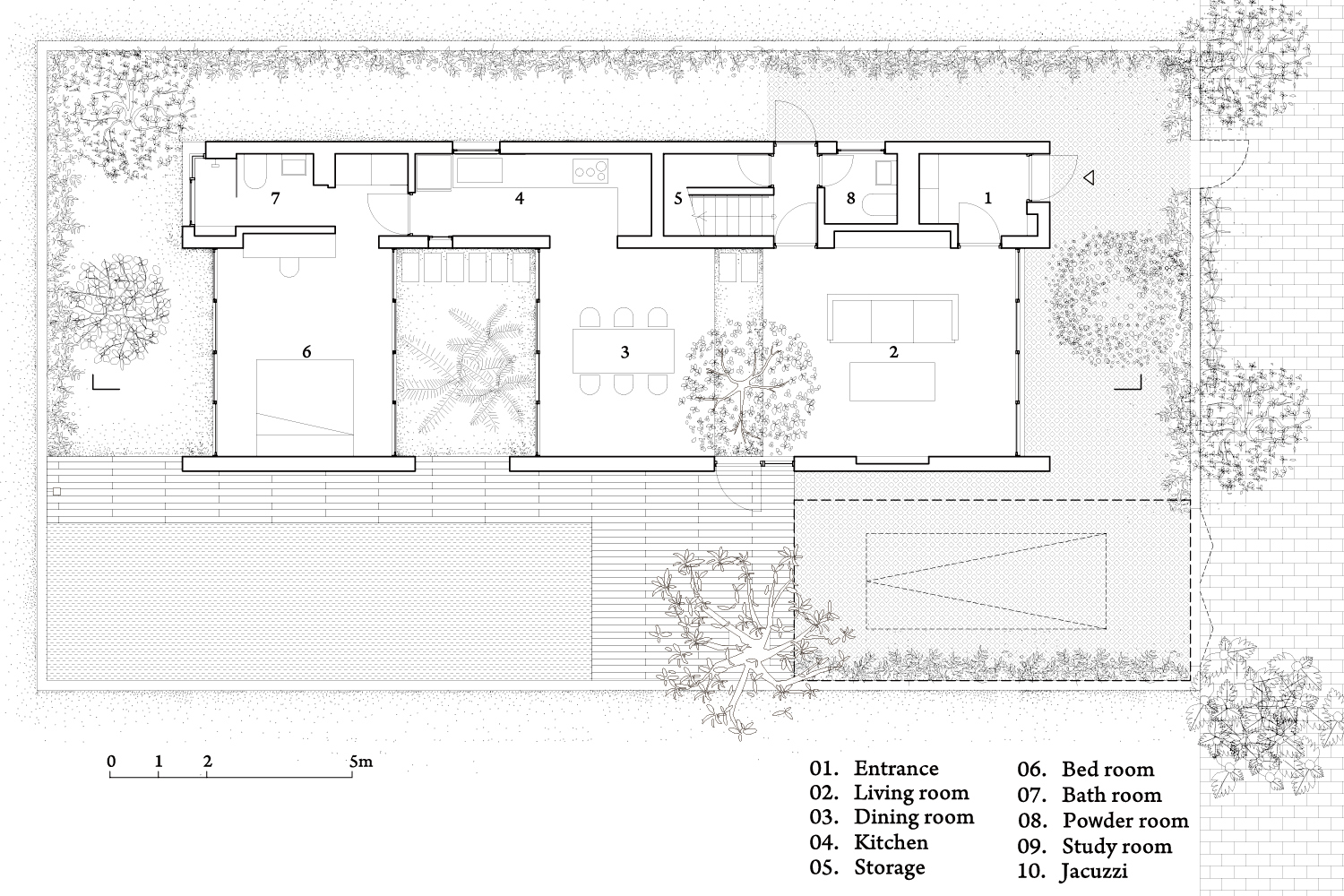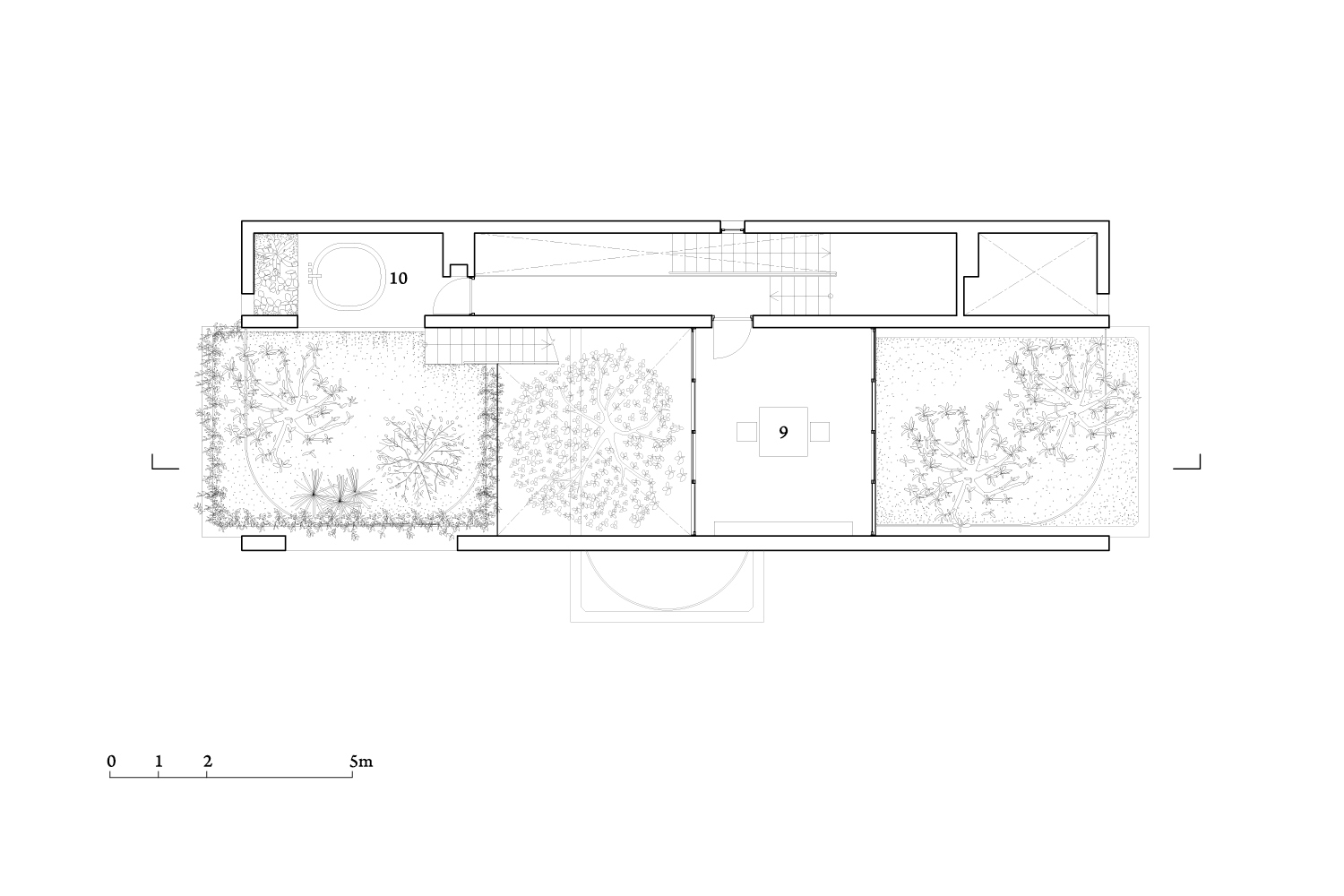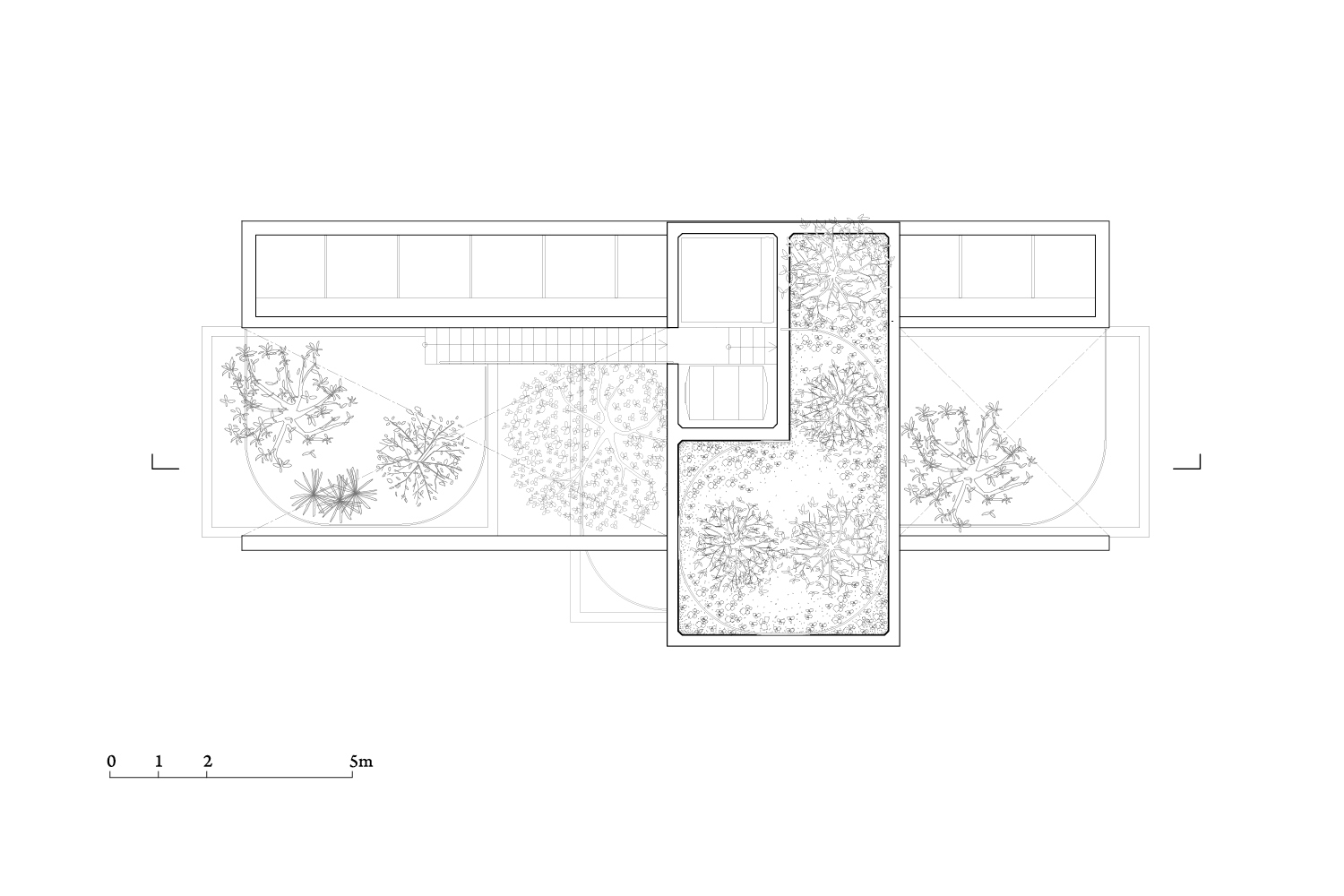[via archdaily]
The Binh House is probably one of the most intriguing and most engaging pieces of residential design I have come across in recent time. Designed by Vo Trong Nghia Architects, the 3 bedroom home is a 2-storey structure punctuated by green spaces and green courts seemingly stacked atop one another on multiple levels.
High ceilings, open-to-air courts and floor-to-ceiling windows are some of the features found in the home, coupled with its unique rectilinear form. Vo Trong Nghia Architects showcase an exemplary balance of volumes and masterful space planning with a unique spatial interrelationship that they seem to have perfected with their residential work.
Here’s their description,
[dropcap size=big]U[/dropcap]nder the rapid urbanization, cities in Vietnam have diverged far from their origins as low density tropical green space. Newly developed urban areas are losing their connection with nature. Binh house by Vo Trong Nhia Architects (VTN Architects) is one project in the “House for Trees” series, a prototypical housing design, providing green space within high density neighbourhood. The Inhabitants is a family of three generations. Therefore, the challenge is to create spaces which allow its residents interact and communicate despite their differences.
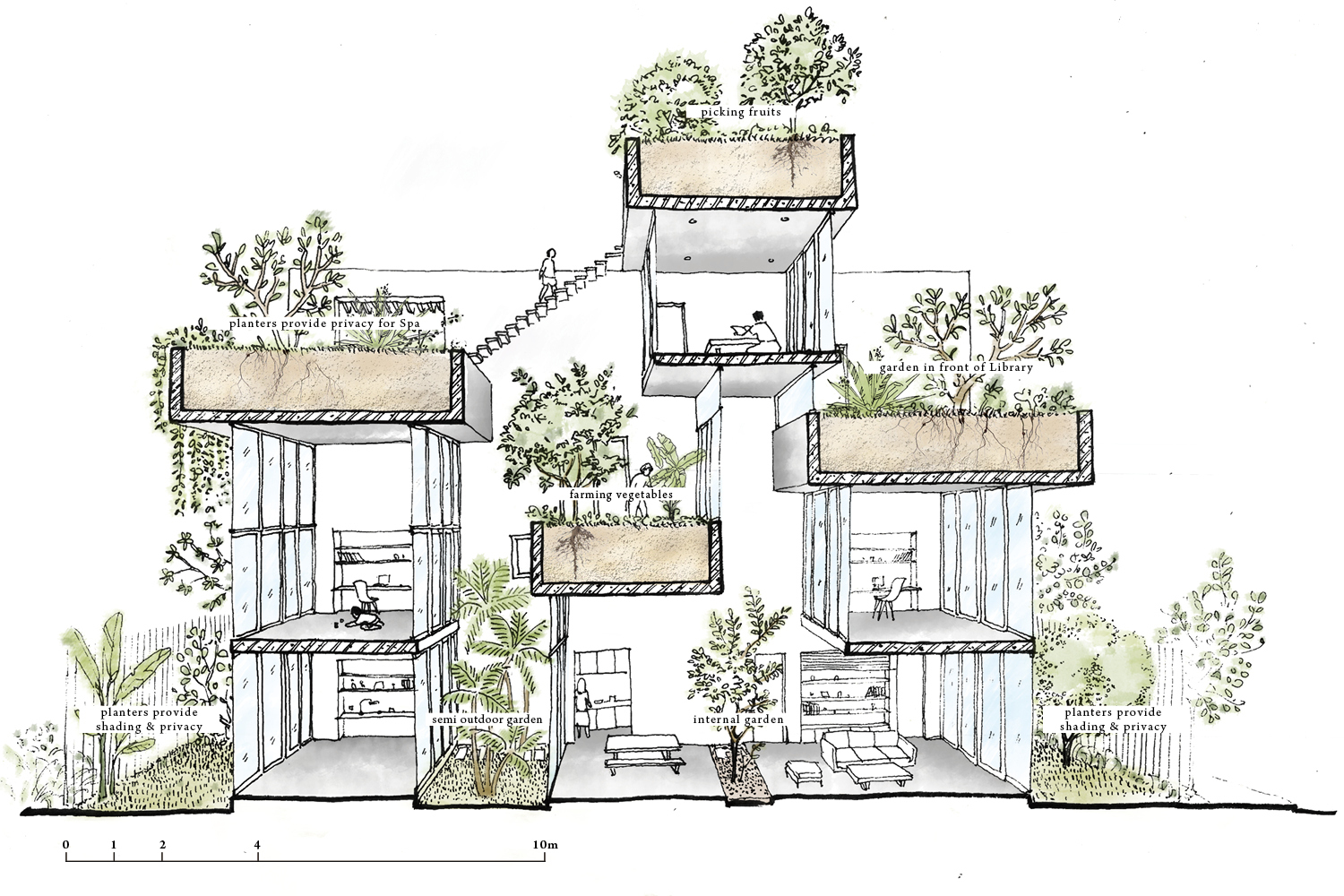
Gardens located on top of the vertically stacking spaces; bounded by sliding glass doors. This strategy not only improves the microclimate by using natural ventilation and daylight in every room, but the alternately stacking openings also increase visibility and interaction between the family members.
Living, dining, bedrooms, study room are continuously opened. From one room, people’s sightlines can reach beyond to the other rooms via the gardens. Service areas such as the kitchen, bathrooms, stairs and corridors are located in the west to limit heat radiation exposure towards frequently occupied areas. The vertical variation of spaces creates a lopsided pressure difference. Thus, when the surrounding houses are built, natural ventilation is maintained. Thanks to these passive strategies, the house always stays cool in the tropical climate. Air conditioning system is rarely used.
The roof gardens host large trees for shading, therefore reducing indoor temperature. Vegetables can also be planted to serve its resident’s daily needs. This vertical farming solution is suitable for high-density housing whilst also contributing to Vietnamese way of life. Using sustainable materials such as natural stone, wood, exposed concrete combined with the microclimate, this house reduces greatly operational and maintenance cost. Up to date, residents have never used furnished AC. The architecture is not only to meet the functional and aesthetic concerns, but also as a means to connect people to people and people to nature.
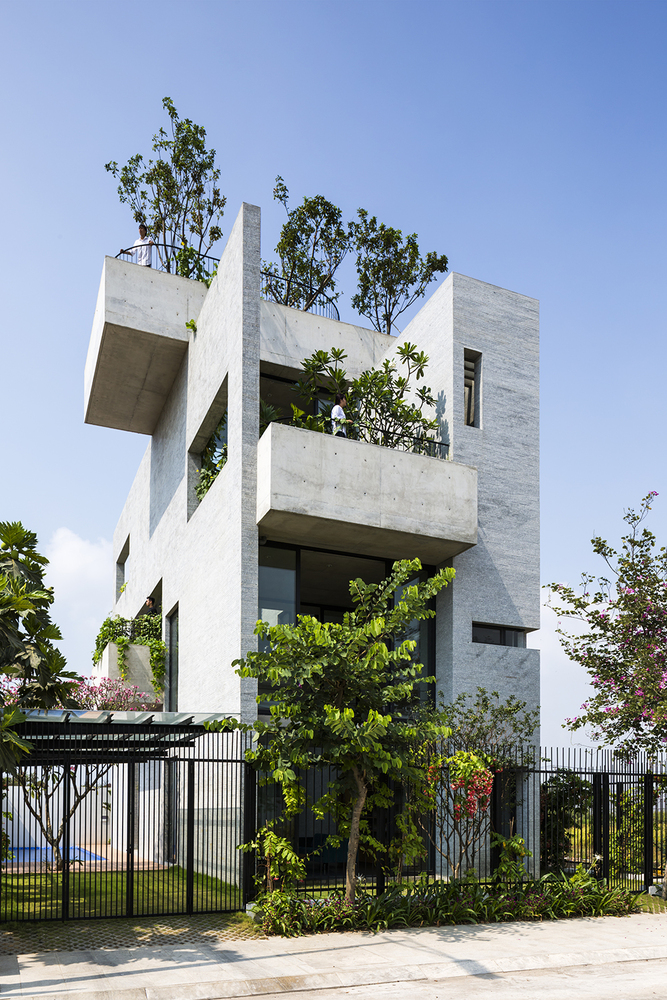
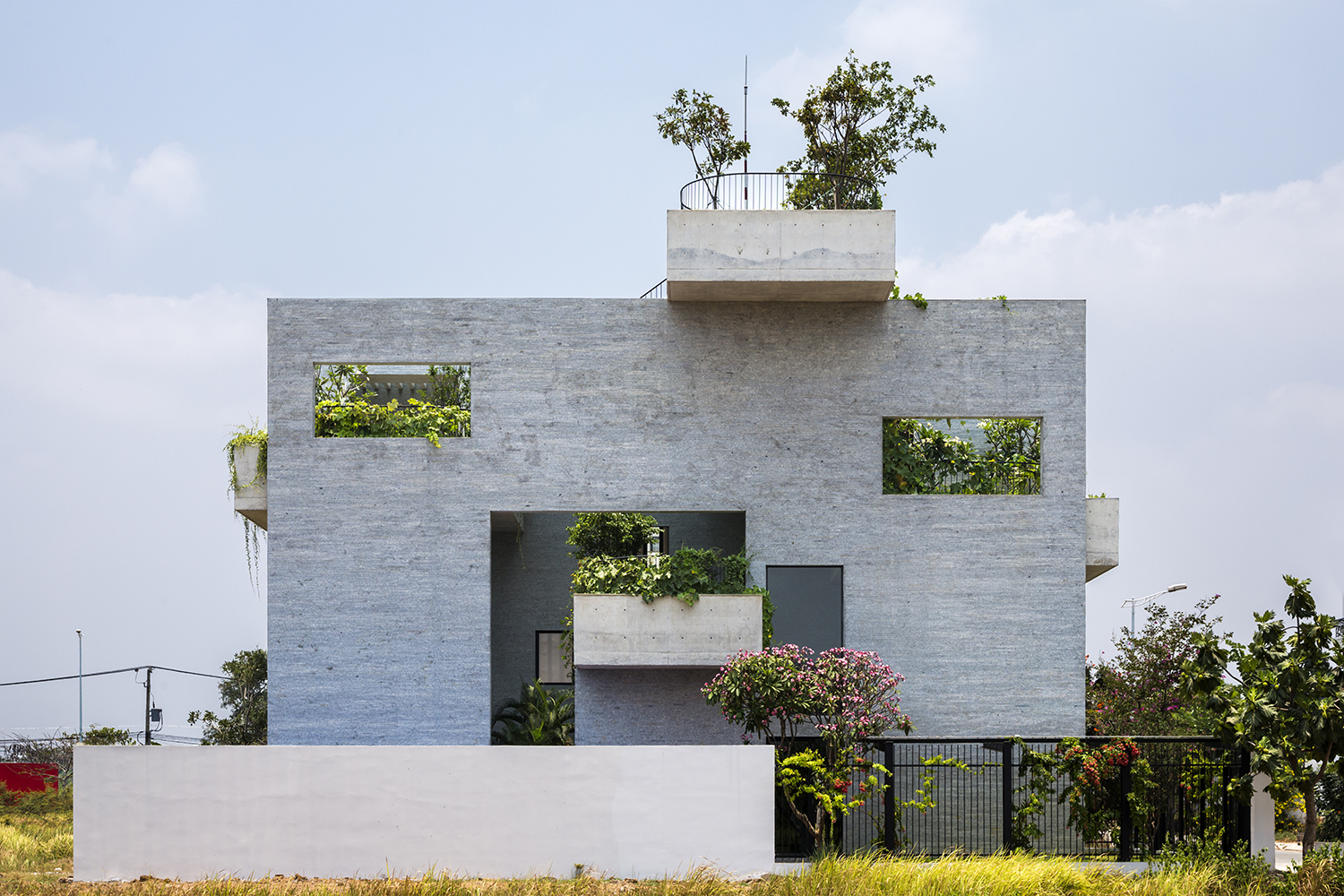



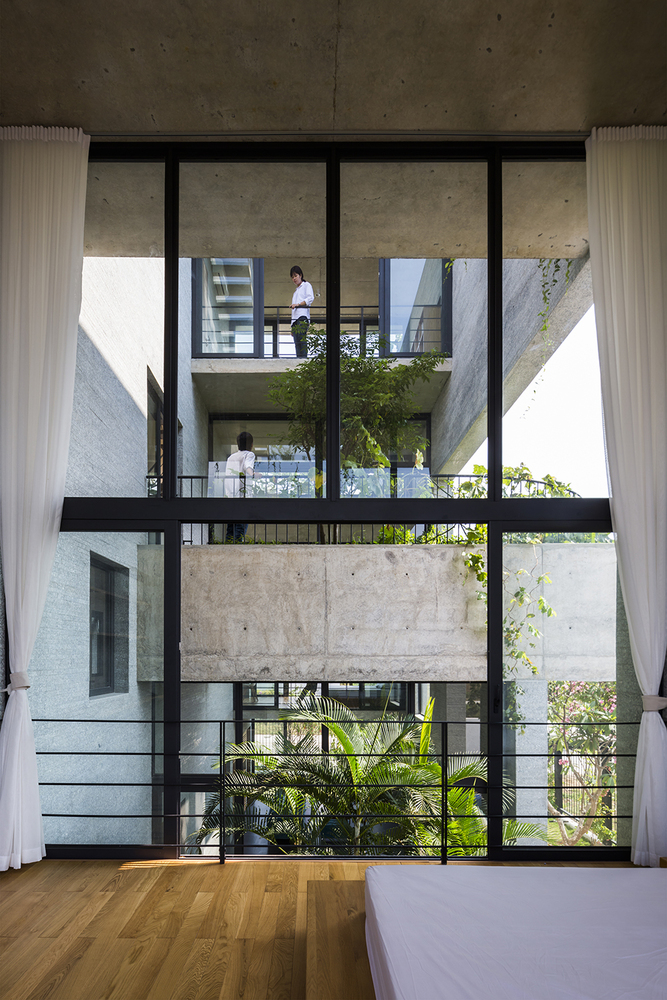
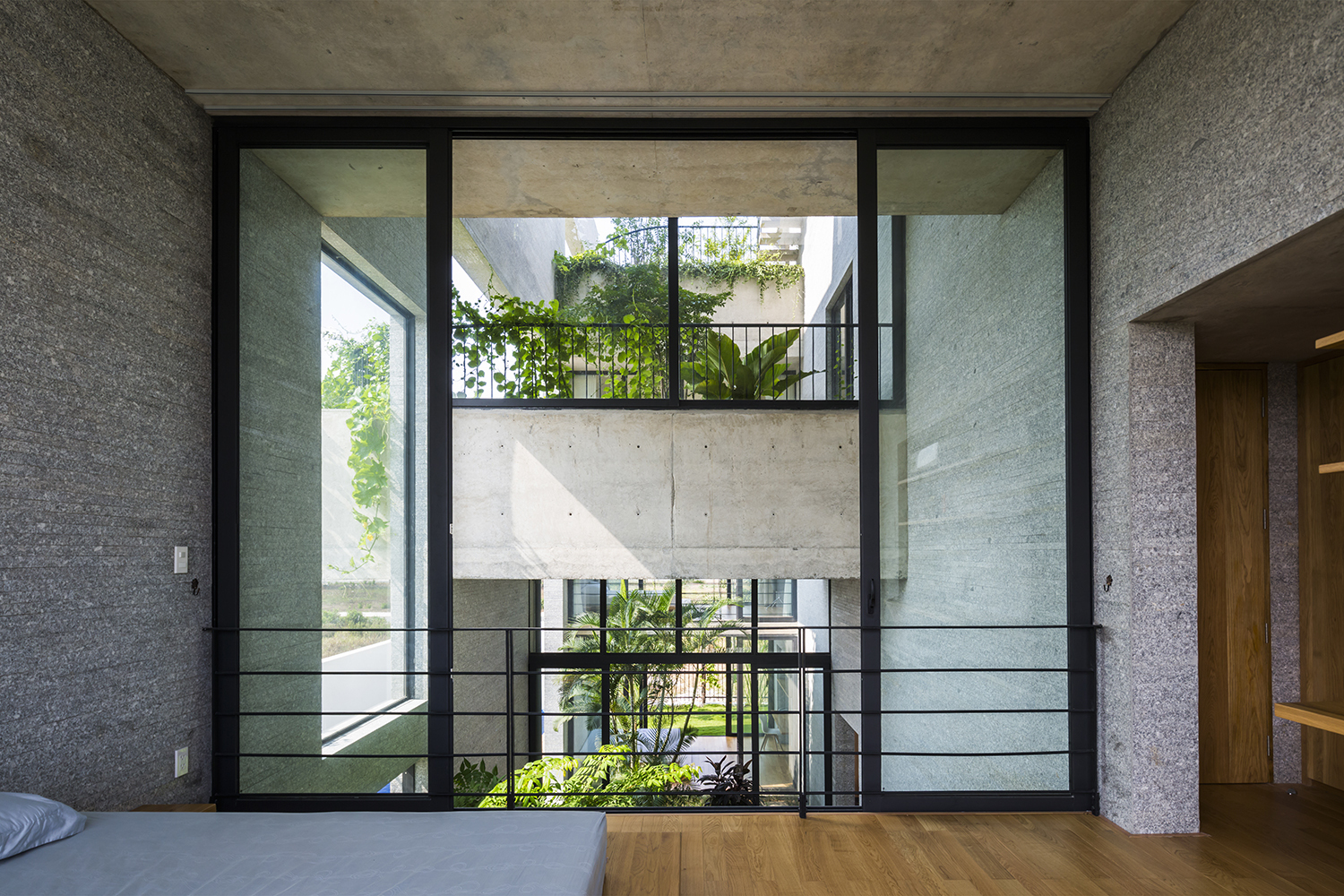

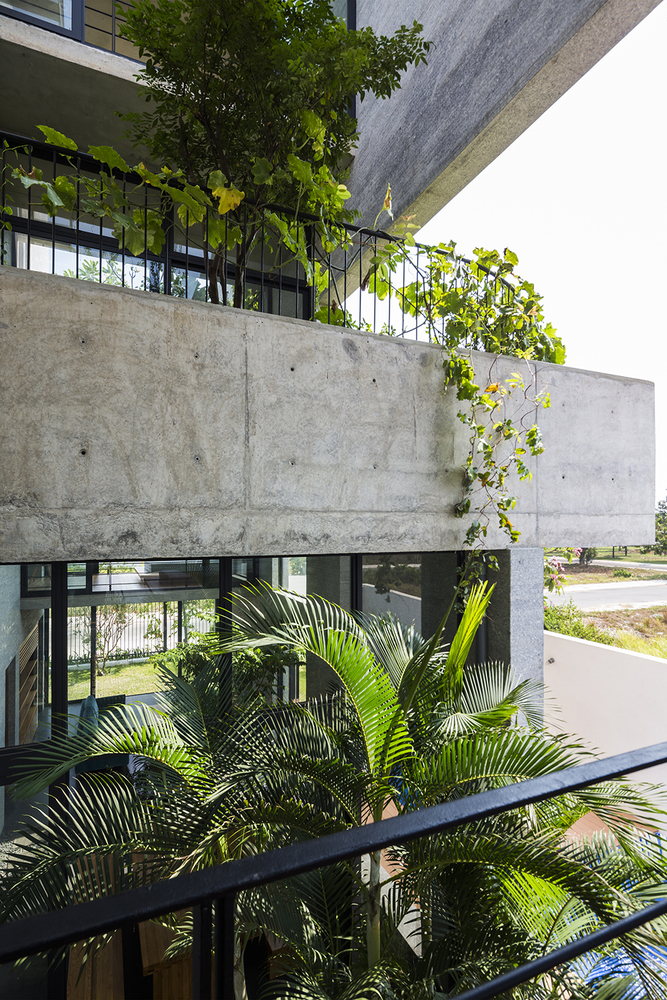
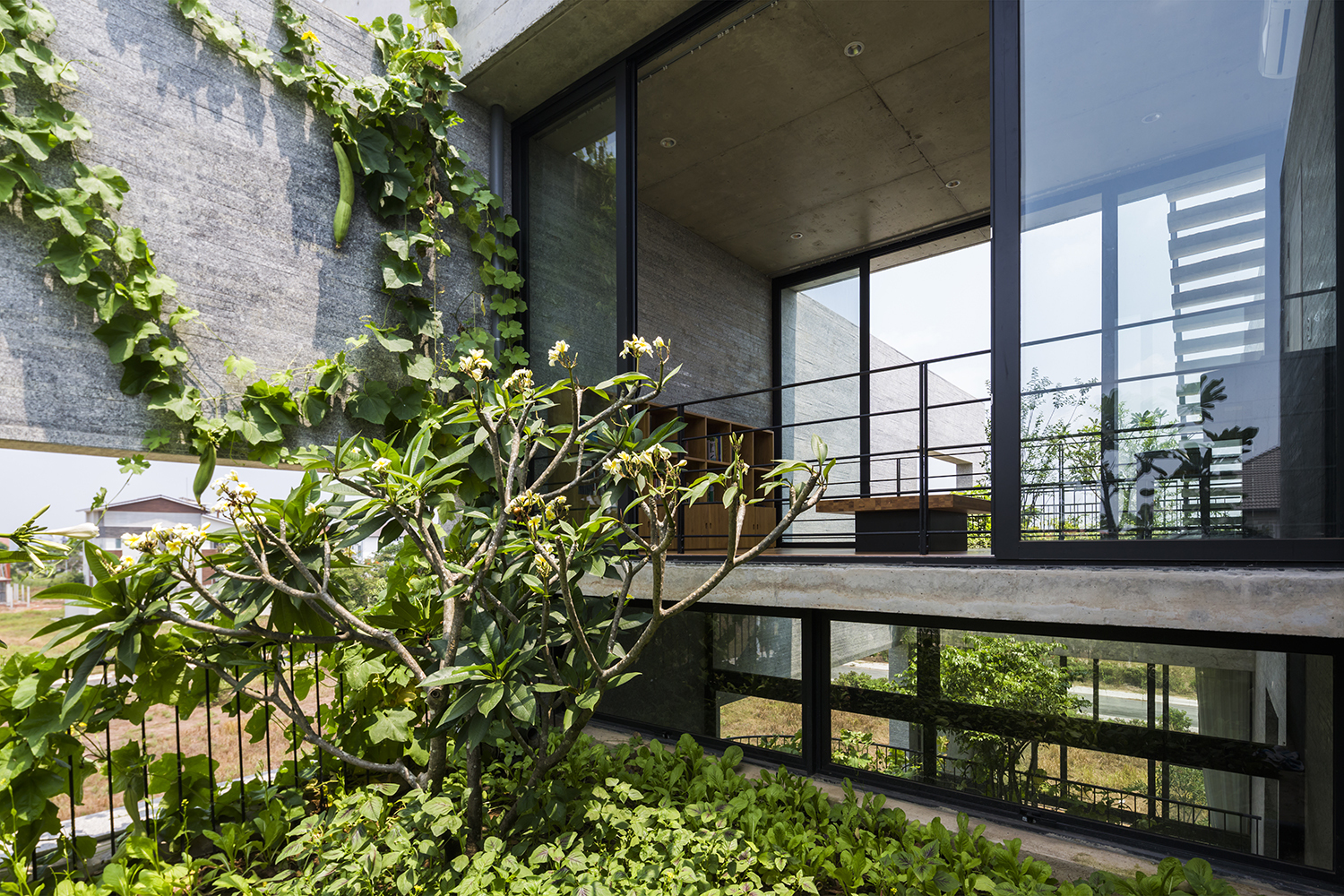
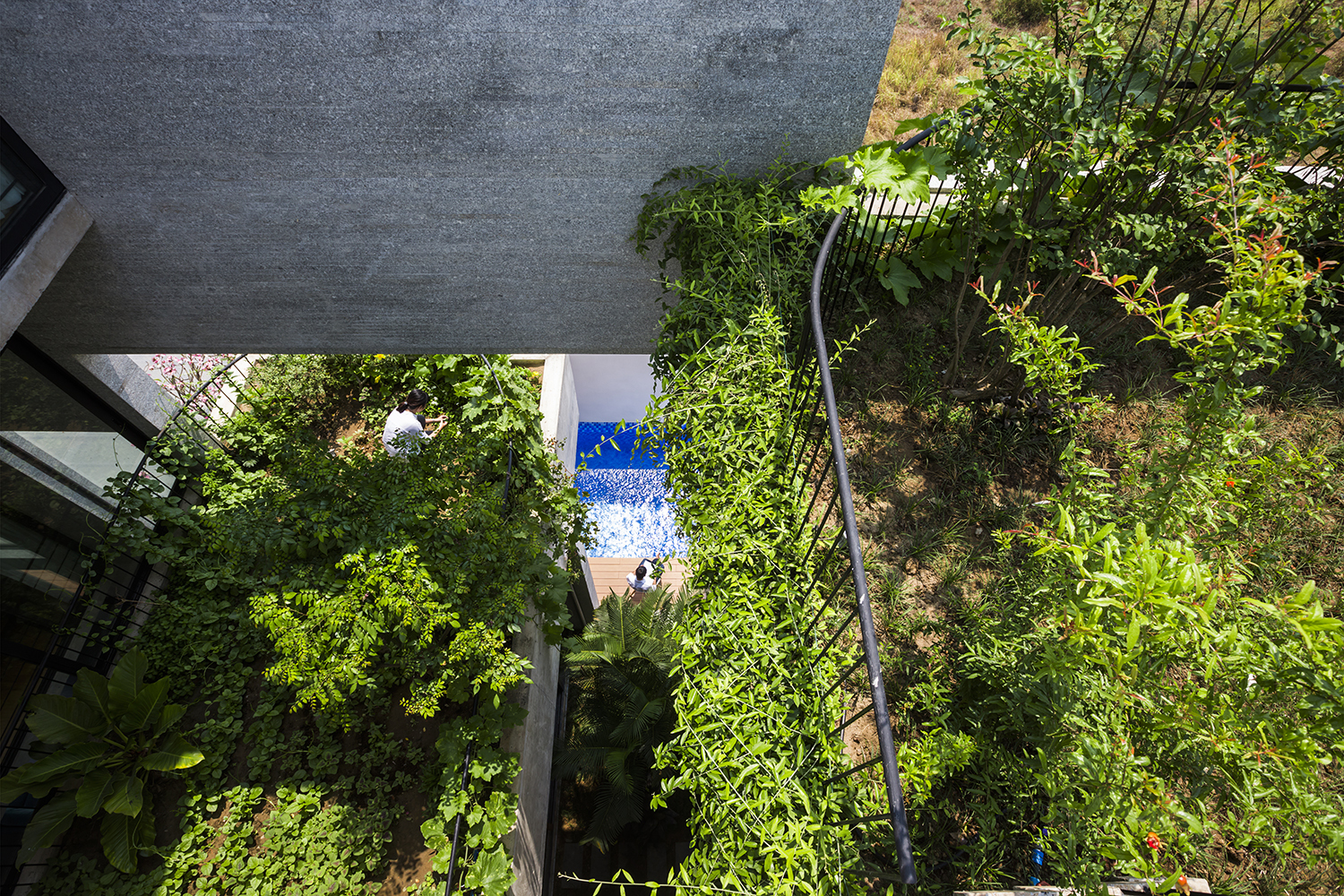
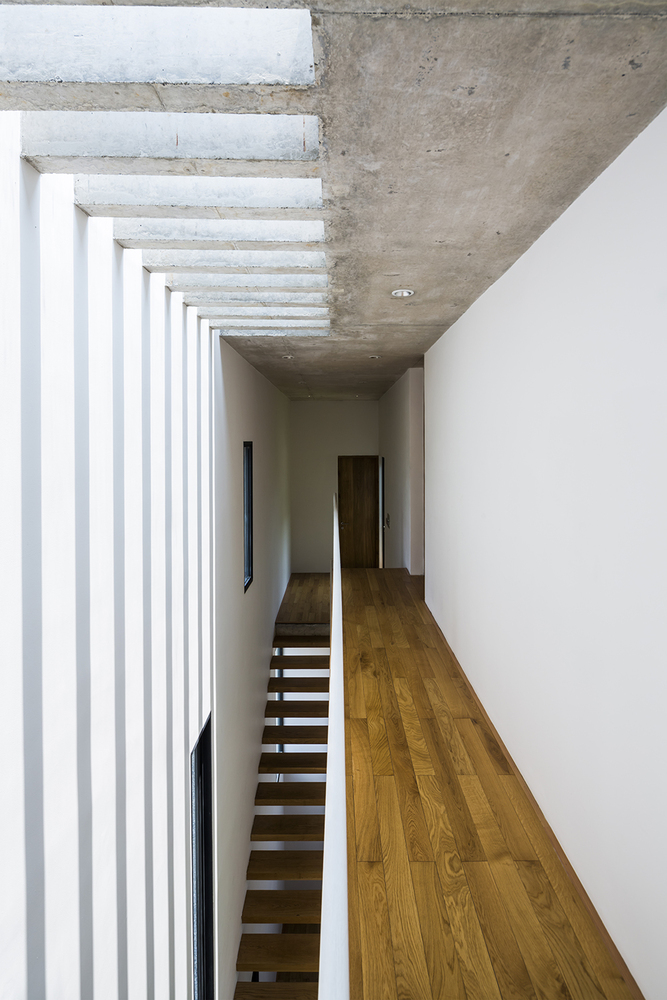
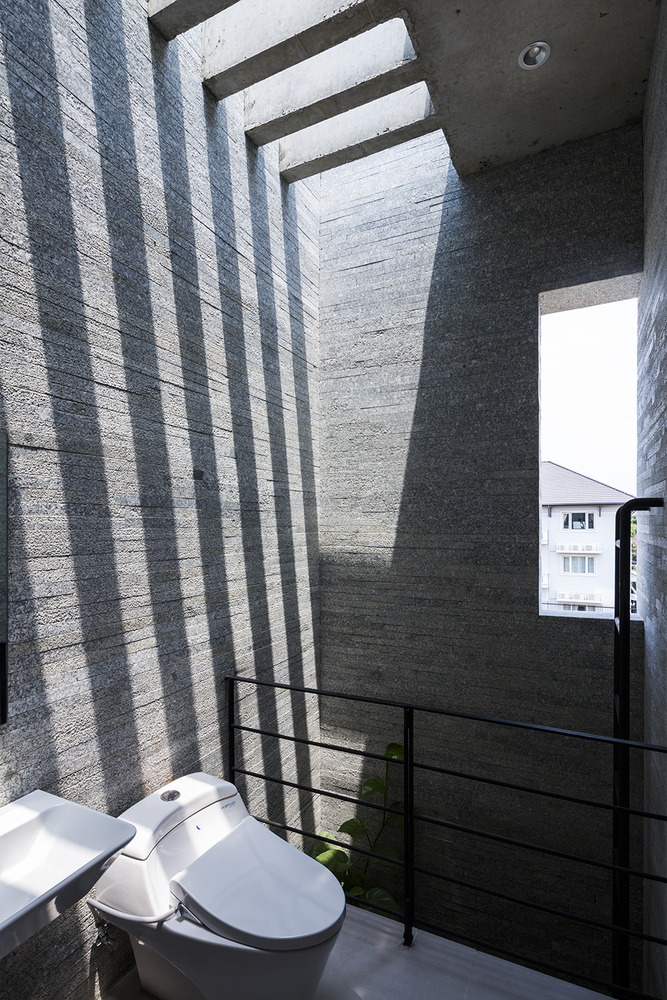
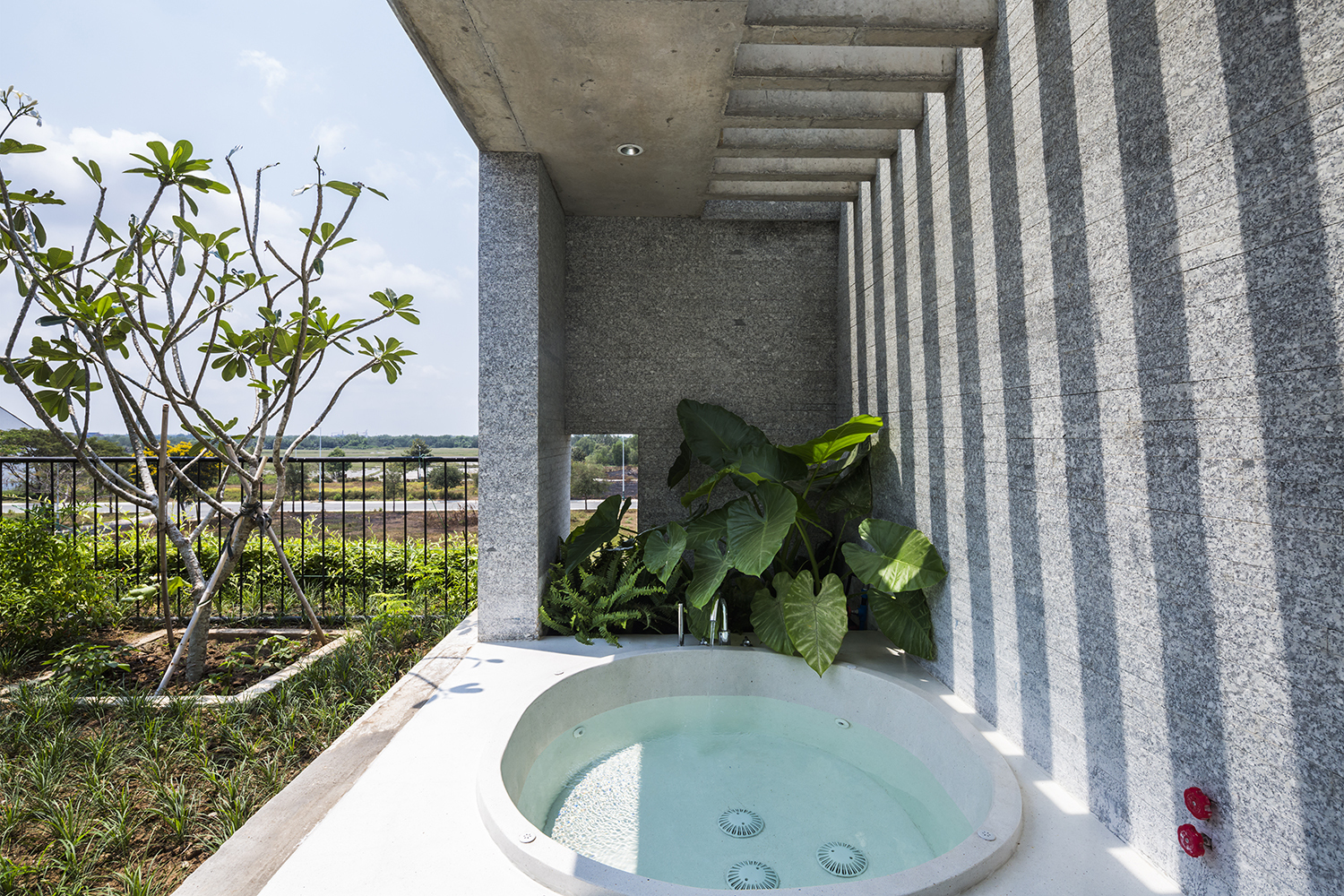

PROJECT DETAILS
- Status: Completed on 2016.02
- Program: Residence
- Location: District 2, Ho Chi Minh city, Vietnam
- Architect Firm: Vo Trong Nghia Architects
- Principal Architects: Vo Trong Nghia
- Design Team: Masaaki Iwamoto, Hsing-O Chiang, Nguyen Tat Dat, Nguyen Duy Phuoc, Takahito Yamada
- Site Area: 268 sqm
- GFA: 275 sqm
- Photographs: Hiroyuki Oki
- Contractor: Wind and Water House JSC



